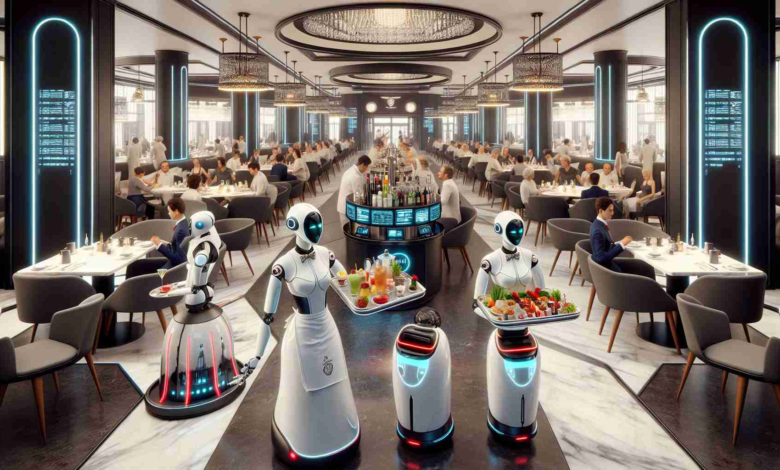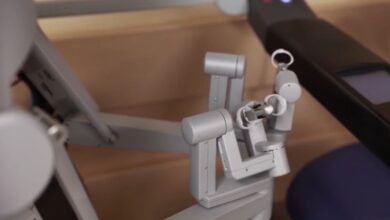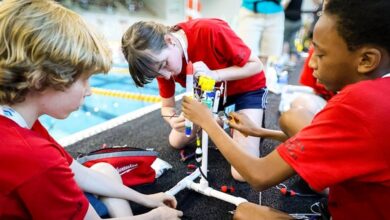Redefining Service in the Hospitality Industry

Summary: The advent of robotics in customer service presents both opportunities and challenges for various industries. With a growing market for service robots and advanced AI implementation, businesses are experimenting with robots to improve efficiency and engagement. Evan’s Sweets, a Virginia-based dessert shop featuring a robot named Sprinkles, encapsulates this trend. While such technology promises enhanced service capabilities, it also raises concerns about workforce displacement and the need to maintain the human touch. The integration of robots signifies a transformative period in consumer services, balancing innovation with traditional customer care.
In the charming town of Bluefield, Virginia, a futuristic chapter unfolds in the warm atmosphere of Evan’s Sweets. Among the clinking of spoons and laughter of patrons, a robot named Sprinkles scoops ice cream with precise movements and a programmed smile. In this quaint dessert shop, a new protagonist in customer service takes center stage: automation. Sharon Ratliff, the shop’s owner, embraces this hybrid model where technology complements human service rather than replacing it, showing a progressive vision for her business.
The dessert shop’s employment of Sprinkles exemplifies a burgeoning era where robots are not mere novelties but essential players in a high-tech service landscape. Service robotics is poised for a boom, bolstered by scarcity in labor and the push for advancements in AI and mechanical engineering. Such progress is forecasted to bring robots that can navigate complex social interactions and tasks with newfound finesse.
However, this shift is not without its obstacles. The integration of service robots necessitates careful consideration of ethical and economic factors, like the job security of human employees and the proper balance between automated efficiency and the personal touch that customers cherish.
Evan’s Sweets stands as a vignette within the broader narrative of modern consumer service—a synthesis of heritage and innovation tailor-made for contemporary clientele. As robots gain a foothold in settings like this, their success will hinge on their capacity to blend seamlessly with the essential human element that defines customer service. For an in-depth understanding of the impact and future of service robots, entities such as the International Federation of Robotics and Robotics Industries Association offer valuable insights into the evolution and potentials of these technologies.
The Integration of Robotics in Customer Service
The story of Evan’s Sweets and its robotic employee, Sprinkles, is a glimpse into a future where the customer service industry is increasingly influenced by robotics and artificial intelligence (AI). The integration of such technologies is revolutionizing how businesses interact with customers, promising improved efficiency and novel experiences. Yet, as service robots become more prevalent across industries like retail, hospitality, and food service, there are broader implications to consider.
Market Forecasts and Industry Growth
Industry analysts have been keeping a close eye on the expansion of service robotics. The market for service robots, particularly in customer-facing roles, is experiencing substantial growth. As AI and robotics technologies evolve, they are expected to increase not only in capability but also in economic viability. This means that businesses of all sizes, similar to Evan’s Sweets, are looking at investing in automation to stay competitive and meet changing consumer expectations.
Studies predict a significant uptick in the deployment of service robots over the next decade. Market research suggests that the cost-effectiveness and added value provided by robots like Sprinkles will fuel adoption rates among businesses worldwide. Improved analytics, natural language processing, and physical dexterity will make robots increasingly suitable for a wide array of service tasks.
Issues in the Robotics Industry
Despite the promise of enhanced service provision, the rise of service robots also introduces complex issues. Job displacement is a real concern, with the potential for robots to replace human workers in certain roles. There is a debate on how to best integrate human workers with robotic counterparts to optimize the workforce while minimizing negative social impacts. Moreover, companies must ensure that the customer service quality remains high—a challenge given the nuanced demands of customer interactions that traditionally rely on human empathy and understanding.
Crucially, businesses must manage the public’s perception of robots in service roles to foster acceptance and satisfaction. Customers accustomed to human interaction may initially resist change, and teaching them the benefits of robotic service without eliminating the human element is a delicate task.
For further insights and analysis, consider visiting authoritative industry organizations:
– International Federation of Robotics for global robotics statistics and trends,
– Robotic Industries Association for North American robotics industry information.
These entities provide comprehensive data, offering a window into the promising yet challenging world of service robotics. As Evan’s Sweets demonstrates with Sprinkles, the potential for innovation is immense, blending the art of traditional customer care with the ingenuity of robotics for a new era of service.

Roman Perkowski is a distinguished name in the field of space exploration technology, specifically known for his work on propulsion systems for interplanetary travel. His innovative research and designs have been crucial in advancing the efficiency and reliability of spacecraft engines. Perkowski’s contributions are particularly significant in the development of sustainable and powerful propulsion methods, which are vital for long-duration space missions. His work not only pushes the boundaries of current space travel capabilities but also inspires future generations of scientists and engineers in the quest to explore the far reaches of our solar system and beyond.



